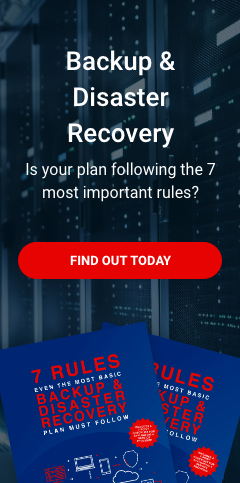If you're like most business owners, you probably think of hackers as criminals who are out to get your data. And while that is certainly true, hackers can also be a valuable resource for businesses that want to keep their data secure. In order to safeguard your organization from threats, you need to start thinking like a hacker and stay several steps ahead of the cybersecurity game.
-
- Sales: 407-759-6625
- Customer Support: 407-589-5693
Blog
The 5 qualities you should look for in an IT consultant

There are many reasons why small and mid-sized businesses (SMBs) should hire an IT consultant. For instance, an IT consultant can provide objective, expert advice on how to best use technology to meet your business goals. They can also help you troubleshoot problems and resolve tech issues more quickly.
6 Key elements of a network security framework

Like other businesses today, your small or medium-sized business (SMB) in Florida faces a myriad of cyberthreats, any of which can lead to massive financial losses as well as the loss of customer trust and brand reputation. Network security is crucial for defending your SMB against cyberthreats and keeping your operations going.
How do multicloud setups benefit financial organizations?
4 Digital transformation trends in the legal industry

In 2020 and 2021, the legal industry — along with all other sectors — underwent a massive, unprecedented shift to digital technologies. For many legal professionals, this digital transformation has led to improvements in operations and service delivery, as well as better relationships with clients and partners.
How to securely and effectively collect customer data
6 Features to consider when choosing a Wi-Fi router

Are you in the market for a new Wi-Fi router? If so, there are some features that you need to keep in mind before making your purchase. Not all routers are created equal, and each one has its own set of benefits and drawbacks. In this blog post, we will discuss some of the most important features to look for when choosing a Wi-Fi router.
Why law firms should work with MSPs

Law firms are tasked with ensuring the safety and security of their clients' data. To accomplish this huge responsibility, it's important for law firms to partner with a trusted managed IT services provider (MSP).
An MSP is a company that provides outsourced IT services to businesses, from furnishing and managing IT infrastructure, to providing help desk and technical support services.
5 Essential skills employees must have in the hybrid work era

Hybrid working is a combination of remote and office-based work, making it an attractive setup for businesses that want to protect their employee’s health but still need to operate during a pandemic. And with more and more businesses going hybrid as they reopen their workplaces, it’s clear that employees must acquire a new set of skills in order to thrive in this novel environment.
3 Challenges of hybrid work and how to deal with them

Managing a business is often fraught with challenges, but organizational changes can make it a lot more difficult. The sudden shift to remote work, for instance, was a nightmare for many businesses, as they scrambled to adapt their systems and processes in order to stay afloat amid COVID-19 lockdowns.



